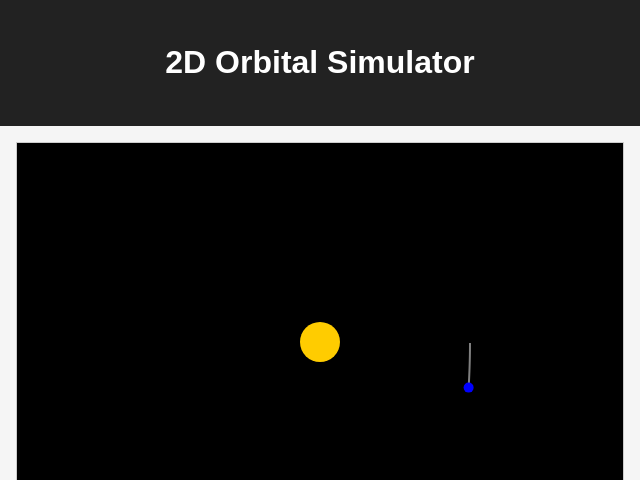2D Gravity Orbit Sim
details
summary
Interactive 2D simulator demonstrating gravitational orbits.
prompt
Create a 2D simulator to visualize a small object orbiting a massive central body due to gravity. Project overview: Develop an interactive 2D simulator featuring a small object in orbit around a central mass. The aim is to demonstrate gravitational effects with adjustable parameters. UI/UX design and flow: Design a form with sliders to adjust parameters: central mass (1–1000 Earth masses), initial distance (1–100 units), and initial tangential velocity (0–50 units; default 1). Ensure changes to these values automatically restart the animation. Integrate smooth, continuous motion in the animation and provide clear visual indicators for states: orbiting, escaping, or crashing. Core functionality and logic: Create a gravitational model for the animation considering the input parameters. Use physics-based calculations to simulate the object's trajectory. Update the animation in real-time to reflect changes in form input. Highlight states with distinct visual indicators. Best practices: Ensure the application is responsive and performs well with real-time updates. Use clear, labeled UI elements to improve usability. Provide informative visual feedback about the object's state to enhance user understanding. Include a FAQ section to address common queries about the animation and its functionality.
original prompt
Create a 2D simulator of a small object orbiting a massive central body due to gravity. Include a form with sliders to adjust the central mass (1–1000 Earth masses), initial distance (1–100 units), and initial tangential velocity (0–50 units, default 1). When values in the form are changed, immediately restart the animation. Animate and draw the orbit and indicate whether the object remains in orbit, escapes, or crashes into the central body. Q: What style of animation do you envision for the orbit? A: Smooth, continuous motion. Q: Should there be labels or visual indicators for the object's state (orbiting, escaping, crashing)? A: Yes, I want clear indicators.
generation cost summary
model name: o3-mini-high
response time: 93.26 sec.
result tokens: 11,903
cost: $0.05300900
